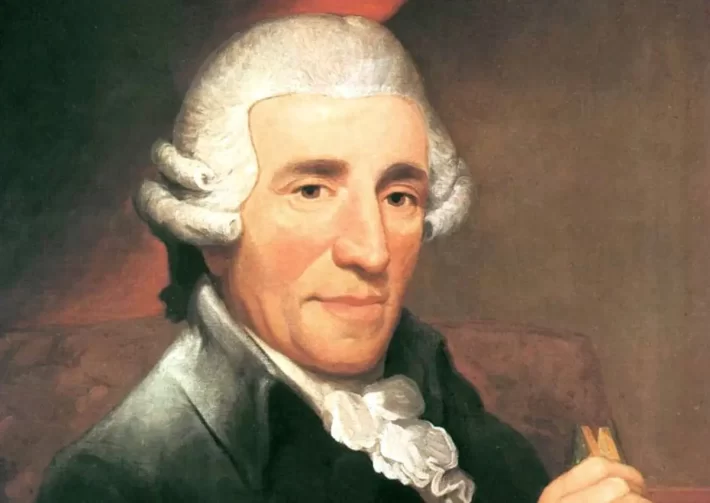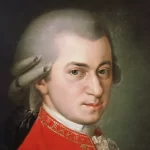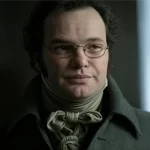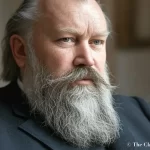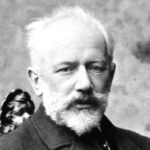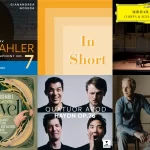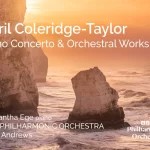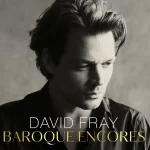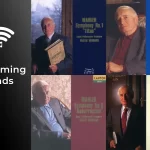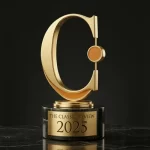Joseph Haydn (1732-1809) is often referred to as “Papa Haydn” for his immense contribution to classical music. He is the most prominent figure in developing the classical composition technique that used so many composers to follow, and still uses as a reference to this day.
Much like J.S.Bach, Haydn spent most of his life in a single position, as Kapellmeister for the Esterházy family, which gave him access to diverse musical forces, but also kept him musically and personally isolated. Some explain his apparent boundless inventiveness to this isolation.
Haydn compositional style took some time to shape, and at its heights treated each element of a phrase, rhythm or harmony as a single, basic unit that can be treated as a basis for later development. The big advance in the “Sonata Form”, a way of introducing musical themes and developing it in a continuous manner is largely (though not solely) attributed to Haydn, and a vast number of his compositions used this form in at least one of their movements.
There is hardly any classical music genre that Haydn didn’t contribute to, maybe saved for opera, which the composer dully composed at the request of his employees and lacked some of his better efforts. The Symphony, String Quartet, Piano Trio, Piano Sonata, Solo Concerto, Secular Mass and Oratorio – All appear as part of Haydn superb output. If at previous decades Haydn was treated as an old-fashioned “series” composer, the past several decades saw a change in assessment, bringing to the fore the composer’s inventiveness and wit.
Here are 10 pieces that even listener who wants to know Haydn should be familiar with. As always, we recommended recordings which we feel are the best way to get familiar with a piece, yet are not necessarily our top recommendation for it.
London Symphonies, No. 93-104
During two major tours to London (1791-1794), Haydn composed, in collaboration with the violinist, composer, and impresario Johann Peter Salomon, who arranged and conducted many of Haydn’s concerts in his visits. At that point, Haydn has composed Symphonies for decades, and perfected the genres to such an extent that other composers followed suit, perceiving the Symphony as a major genre to excel at. And so, Haydn’s “London Symphonies” show the composer at the peak of his powers as an orchestral composer, incorporating all of the creativity, inventiveness, and fines he required by working with the prince’s orchestra at Esterházy.
A typical Haydn Symphony contains four movements. The first is lively and in “sonata form”, often opened with a slow introduction. The second movement is slower and more somber, often marked as “Andante” or “Allegretto”. The third movement is a “Menuett”, sometimes appearing with a “Trio” section, and the fourth movement is a joyous, fast conclusion the Symphony.
With over 100 Symphonies, it’s worth exploring many of the earlier pieces that came before the London series, but the set is a good place to start. Colin Davis’ celebrated recording of the 12 London Symphonies form the 1970s with the Royal Concertgebouw Orchestra has never left the catalog, and still sounds fresh and exuberant, although the analog recording does start to show its age, even with the best of digital transfers. For listeners who want a period instruments and digital version, Marc Minkowski and Les Musiciens du Louvre recording of the set, taken from live concerts at the Wiener Konzerthaus, is a remarkable performance, with an audience that can’t hold on to their laughter, proving that the Haydn humor still works, even in the 21st century.
Cello Concerto No. 1
It took many years for Haydn Cello Concertos to be discovered by musicians and the audience. It was only after the Second World War that some dedicated musicologists established their existence and located the original scores. Today, the First Concerto is a staple of the cello repertoire, and practically all respectable cellists have performed and recorded it. This Concerto was most likely written for the first cellist of the Esterházy Orchestra, Joseph Franz Weigl, who must have been a remarkable virtuoso, based on the technical demands of the third movement. Written for a modestly sized orchestra, the Concerto is small in scale but full of delightful musical themes and intricate dialogue between orchestra and soloist.
Steven Isserlis, accompanied by the Chamber Orchestra of Europe under Roger Norrington gives a poised, assured performance that emphasizes the inner beauty of Haydn’s writing rather than his brilliant show of virtuosity. It’s a well-balanced version in terms of collaboration and recording, and will hardly disappoint.
Trumpet Concerto
Haydn Trumpet Concerto was composed for the composer’s friend Anton Weidinger, who experimented with a new “keyed trumpet”, which allowed for the instrument to play chromatic scales, like other wind instruments of the time. Previously, the trumpet was able to play only a handful of notes in certain keys and on a relatively high pitch, so this new invention required a new repertoire to match. Haydn delivered with a charming, care-free piece in his best classical style, with a sonata-form first movement, a lovely second movement and a virtuosic finale that tested the new instrument’s abilities to the fullest. This finale is also the best-known movement of the Concerto, and it appears on many “best of” compilations of Haydn’s music.
Wynton Marsalis’ performance of the Trumpet Concerto has never left the catalog since it first appeared in the early 1980s. The recording is not ideal, placing the orchestra rather back, but Marsalis is a terrific soloist and his third movement is one of the best on record, cherishing every technical display of his instrument.
String Quartets
Similarly to the Symphony, Haydn did not invent the genre of the String Quartet, but he was the composer that single handily made it one of the most prominent genres in the history of music, a form of inventiveness, emotional power, and attractiveness. A small group of 4 players – cello, viola, and two violin – is used by Haydn as a tool to interplay ideas, laugh, dance and reflect. He wrote over 70 works in the genres, usually in opuses which contains 3-6 pieces each. The quartets Op. 20 already show Haydn as a highly original chamber composer, and the quartets Op. 33 were extremely impactful for musicians and the music-loving public alike, causing Mozart to compose his own set of significant String Quartets dedicated to Haydn.
Many would say Haydn reached his best in the late Op. 76 Quartets, yet concentrating on a single opus does a disservice to the composer. It’s recommended to sample from the different opuses, and Quatuor Hanson’s latest album of 6 major String Quartets can be warmly recommended. For those who want the full set of String Quartets, look no further than the Kodály Quartet, in a clear digital sound and remarkable consistency.
Piano Trio No. 39 (“Gypsy”)
Some of Haydn’s most sophisticated and “pianistic” writing for the keyboard can be found not in his Piano Concertos or solo Piano Sonatas, but in his trios for violin, cello, and piano. He wrote over 40 such works, where the violin and cello are often used to strengthen the melodic lines of the right and left hand, respectively. This was done mainly because of the limitations and weaker bass of the pianoforte of the day, which needed enforcement. The piano trio in G Major (Hob XV:25) is most known for its finale, incorporating rhythms that can sound organically Gypsy.
The Beaux Arts Trio recorded the complete set of piano trios in the 1970s for then Phillips, a set that has not been surpassed since with profound and dedicated performances, and the Gypsy trio is no exception. For those who prefer a single CD, Trio Wanderer’s Harmonia Mundi performance is the most recommended digital version.
Piano Concerto No. 11
This is Haydn’s most famous Piano Concerto and the most satisfying from a musical standpoint. Like Bach’s Keyboard Concertos, many of Haydn’s Keyboard Concerto are transcriptions of other pieces, some of them lost. The D Major Concerto, on the other hand, is probably originally written for the keyboard. It’s not entirely clear, however, if it was performed on a harpsichord or the fortepiano, and period instruments performances can be heard on both. The Concerto does not contain brilliant piano writing that a Mozart Piano Concerto might include, but it does contain lovely melodies and Haydn’s unique treatment of small motivic material and development. The third movement, like some of Mozart’s own Finales, is “in a Turkish style”, ending this short Concerto with a smile.
Leif Ove Andsnes conducts the Norwegian Chamber Orchestra from the keyboard, in a perfectly proportional performance that keeps the classical style of the piece but brings in additional excitement. The album contains two more Keyboard Concertos, in superb performances as well.
Piano Sonata No. 52
Haydn, contrary to many of the composers of the day, did not particularly excel in playing an instrument. He was an adequate player of many instruments, and reportedly played the violin rather well, but was certainly not a virtuoso-pianist as Mozart, Clementi or C.P.E Bach were. In addition, many of his solo piano music was intended for either his own students or for the amateur keyboard player, making them less impressive from a pianistic or compositional standpoint. Nonetheless, among Haydn’s more than 50 Piano Sonatas listeners can find superb music. He wrote one of the first big Piano Sonata in C minor (HOB. 20), and more charming pieces in 2 or 3 movements that were performed and recorded by major pianists, such as Sviatoslav Richter, Andras Schiff, Jean-Efflam Bavouzet and Leif Ove Andsnes. With his later piano music, as in his piano trios and Symphonies, Haydn added an extra layer of sophistication, his renowned humor and even a display of virtuosity.
Piano Sonata No. 52 (HOB. XVI/52) is a grand piece on a large scale, with well-defined three movements that include intriguing harmonies and experimenting with chromaticism, a slow movement of stoic quality and a third movement full of rhythmic vitality and difficult technical passages. The Sonata looks ahead to Beethoven’s early efforts in this field.
Alfred Brendel’s 4 CD set of Haydn’s best Piano Sonatas is a staple of the piano recording history and should be in any Haydn or piano lover’s library. He brings a lifetime of knowledge and a true affinity to these works, rarely surpassed on other versions.
Variations in F Minor (Piano)
Alongside his 52 Piano Sonatas, Haydn wrote many sets of variations for solo keyboard. His Variations “Un piccolo divertimento” (HOB. 17/6 ) are a remarkable piece of music, one of the most successful keyboard work by the composer, certainly one of his most moving. At the core of this work is its inventiveness. This is a set of “double variations”, where we find two, contrasting themes and two variations for each. The themes themselves also have motivic similarities, and so the listener is given a sense of uniformity even within the different characteristics of the two. The Coda section, which commonly takes a short segment at the end of the piece, is unusually long, and takes on a life of its own, almost turning the second half of the piece to a freeform fantasy.
Alfred Brendel’s set, mentioned before, includes a lovely performance of the Variations in F minor. For those who insist on a single CD or a digital recording, Jean-Efflam Bavouzet CD from his Haydn series is superb, matched by clear and opened recording quality on a carefully voiced Yamaha piano. The album also contains an additional version of the piece, with a different cadenza than the commonly used, found on some of the composer’s manuscripts.
The Creation (“Die Schöpfung”)
Haydn did write several lovely choral and vocal works – songs, sacred masses, and operas – but his two greatest achievements in the field are the two Oratorios – The Creation (“Die Schöpfung”) and The Seasons (“Die Jahreszeiten”).
In “Die Schöpfung”, Haydn composes texts which depict the creation of the world in three parts. The first two deal with the creation of the planet, with the soloists as angles Raphael, Uriel, and Gabriel, while the third and final part tells the story of Adam and Eve, with a bass and a soprano perform each role. The oratorio, incorporating arias, recitatives, and large choral sections, was written for large halls and used large forces for the time. It was published for German and English speaking audiences in 1800, and enjoyed big success in both premiers in Vienna and London, and then all over Europe.
Herbert von Karajan’s late 1960s performance of “The Creation” with the Berlin Philharmonic and the Wiener Singverein enjoys something of a legendary status, and should be heard mainly for its wonderful soloists, the leading figures of opera houses if the day – Gundula Janowitz, Christa Ludwig, Fritz Wunderlich, Dietrich Fischer-Dieskau, and Walter Berry. For those who want a leaner version, in the English text and on period instruments, Paul McCreesh with the Gabrieli Consort can be recommended without hesitation.
The Seasons (“Die Jahreszeiten“)
Following the success of “The Creation”, Haydn composed another Oratorio using the same Librettist, Gottfried van Swieten. “This Seasons” is less dramatic and more lyrical than “The Creation”, again using orchestral, choral and vocal soloists. It contains some of Haydn’s most enchanting melodies, an aspect that, not necessarily justifiably, has not always been associated with the composer.
René Jacobs conducts a wonderful period instrument performance of The Seasons, with the Freiburger Barockorchester, the RIAS Kammerchor and soloists Marlis Petersen, Werner Güra and Dietrich Henschel, all on top form with a superb recording quality.

This concludes our beginners guide to Haydn. Visit our Beginners Guides to classical music page and get to know more classical music composers. Sign up to our newsletter to get updated on new guides when they are published.
Albums Included with an Apple Music subscription:
Latest Classical Music Posts
- In Short – 5 Albums Worth Your Listen – December 2025
- The Classic Review Annual Survey, 2025
- Review: Avril Coleridge-Taylor – Piano Concerto & Orchestral Works – Ege, BBC Philharmonic, Andrews
- Review: “Baroque Encores” – David Fray, Piano
- Streaming Finds: Neumann’s Late Mahler Cycle (Canyon Label)
- Year In Review – The Best Classical Music Albums, 2025
Read more classical music reviews or visit The Classic Review Amazon store
Follow Us and Comment:
[wd_hustle id=”HustlePostEmbed” type=”embedded”]

